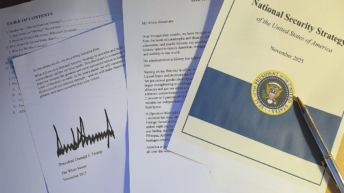
In 1975, a dark chapter unfolded in Bangladesh’s history with the brutal assassination of Bangabandhu Sheikh Mujibur Rahman and most of his family. This tragic event forced his daughter, Sheikh Hasina, to seek refuge in India. Recognizing the gravity of the situation, the Indian government under Prime Minister Indira Gandhi extended protection and support to Hasina and her younger sister Sheikh Rehana. They sought refuge in Delhi’s Pandara Road, where they remained for approximately six years.
The political landscape began to shift for Sheikh Hasina in the 1980s when the Awami League, her father’s party, named her their leader in absentia. This marked the beginning of her significant political journey. In 1996, she was elected Prime Minister of Bangladesh for the first time. Over the years, she secured multiple terms, with her most recent victory in the 12th parliamentary elections marking her fourth consecutive term as Prime Minister.
Fast forward to 2024, just days before the 49th anniversary of her family’s assassination, Bangladesh plunged into severe political turmoil. What began as a student protest against the quota system has now taken a bizarre and violent turn. Protests erupted nationwide, leading to a dramatic turn of events. Sheikh Hasina and her sister were forced to flee the country as demonstrators stormed the Prime Minister’s official residence and took control of the capital. In the ensuing chaos, the army established an interim government, predominantly consisting of retired generals and former judges. Notable Bangla writers, Dr. Salimullah Khan and Dr. Asif Nazrul emerged as potential leaders of this interim government, notably excluding any Awami League members.
Amidst the turmoil, Army Chief General Waqar-uz-Zaman sought to reassure protesters by promising that their demands would be met. He stated, “The Honourable Prime Minister of Bangladesh has resigned from her post, and we will form an interim government for now to run the country. Please keep faith and trust in the army. I take the responsibility and I promise to protect the lives and property of the people.” Despite these assurances, the situation remained volatile. Protesters were seen removing Hasina’s portraits, vandalizing a statue of Sheikh Mujibur Rahman in the Rajbari district, and setting fire to the office of Beximco House, a major pharmaceutical company. The ongoing violence claimed the lives of at least two Hindu councillors, further highlighting Bangladesh’s historical struggles with religious tensions. This destruction of public property and atrocities against minorities suggest that the initial protests against the quota system had a much larger agenda.
The international community closely monitored the situation. US State Department Spokesperson, Matthew Miller, commented on the unfolding events, stating, “We have seen the announcement that Prime Minister Hasina has resigned from her position and departed Bangladesh. We are monitoring the situation carefully. The United States stands with the people of Bangladesh…We welcome the announcement of the interim government and urge any transition be conducted in accordance with Bangladesh’s laws. We are deeply saddened about the reports of human rights abuses, casualties, and injuries over the weekend in the past weeks.”
It is pertinent to note that what started as a movement against the quota system most likely had external interventions. If the protests had only been about the reservations, they would have stopped after the Appellate Division of the Supreme Court had dismissed the High Court’s order. In contrast, the visuals from Bangladesh indicate the menacing nature of protests, for example, a vandalized statue of Sheikh Mujibur Rahman, the architect of independent Bangladesh.
Implications for India
Sheikh Hasina’s recent visits to India marked the close ties between the two nations. In the past year, she visited India three times, including once for the G20 summit in September and twice in June for Prime Minister Narendra Modi’s third-term swearing-in ceremony and a bilateral visit. These visits highlighted the cooperation and strategic partnership between the two countries developed under Hasina’s leadership. Her resignation and the subsequent political upheaval in Bangladesh have significant implications for India.
Historically, India has maintained close ties with Hasina’s government, marked by cooperation and strategic partnerships. Her departure and the rise of an interim government backed by military forces will lead to a shift in Bangladesh’s political dynamics, which might be straining Indo-Bangladesh relations.
One of the most immediate concerns is the potential increase in violence and persecution against minority communities, particularly Hindus, in Bangladesh. Bangladesh has long struggled with religious tensions, and Hasina’s government, despite its challenges, made efforts to contain extremist elements. With her out of the picture and the military-backed interim government in power, there are fears that terrorist groups from India may find succour in Bangladesh under a BNP and Jamaat, led government. This could lead to increased instability in some of the states of Northeast India.
Secondly, A BNP and Jamaat-led government may give rise to extremism within the radiclaiesd elements in Bangladesh society leading to an increase in attacks on minorities and a rise in overt violence. Several reports already indicate that in addition to the Indira Gandhi Cultural Centre in Dhaka, numerous Hindu temples are being attacked in Bangladesh.
For India, this presents a complex challenge. Instability in Myanmar and Bangladesh raises serious regional security concerns. The growing instability could also lead to an influx of refugees, adding to the existing humanitarian concerns. However, the potential refugee crisis coupled with the terrorist activity due to external interventions such as ISI-sponsored terrorist violence will have a negative impact on the peace and stability that now exists in India’s Northeastern states. India would have to balance its diplomatic approach, ensuring support for democratic processes in Bangladesh while preparing for potential security challenges along its eastern borders.
Furthermore, the economic implications of this political shift cannot be ignored. Under Hasina’s leadership, Bangladesh has seen substantial economic growth and development. The current turmoil is likely to disrupt trade and economic relations between the two countries, impacting businesses and economic stability in the region.
India’s diplomatic strategy will need to adapt to these changes. Maintaining regional stability will require proactive engagement with the new interim government and continued support for democratic institutions in Bangladesh. India’s role in supporting a peaceful and lawful transition of power will be crucial in ensuring long-term stability in the region.
The resignation of Sheikh Hasina marks a critical juncture in Bangladesh’s political history. For India, this development presents challenges and navigating this complex situation will require a careful and balanced approach. The future of Indo-Bangladesh relations will depend significantly on how these issues are addressed in the coming months.






Add comment